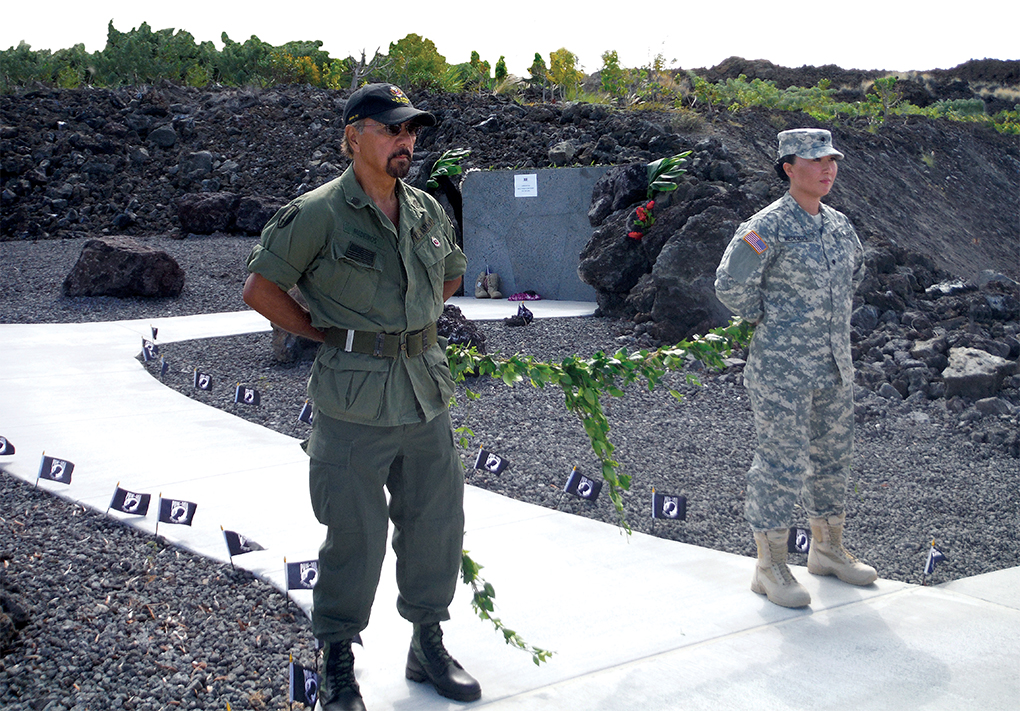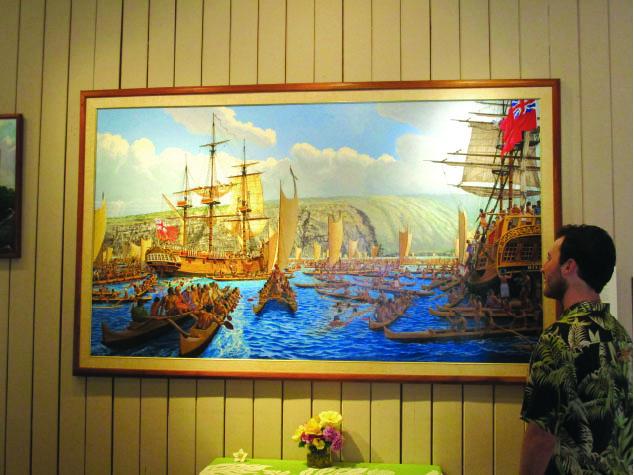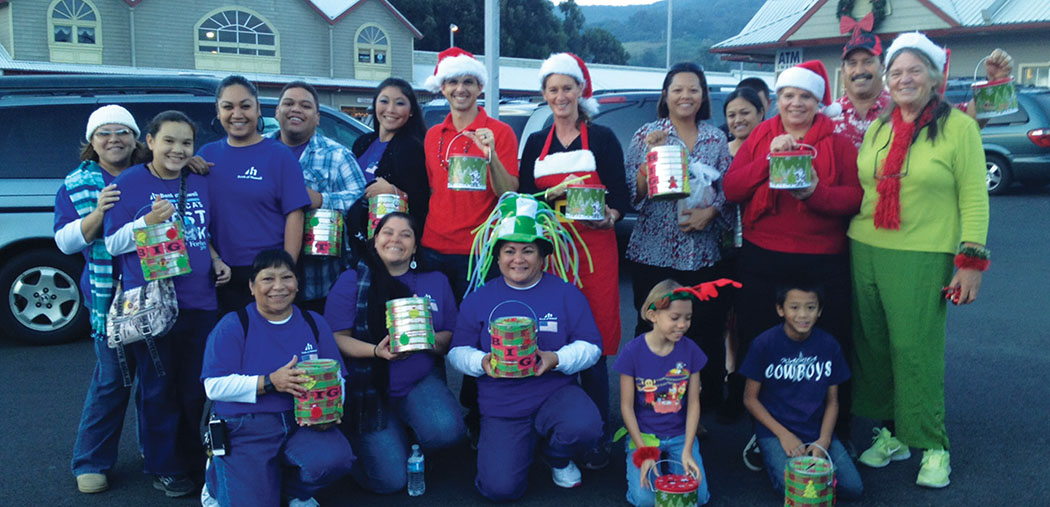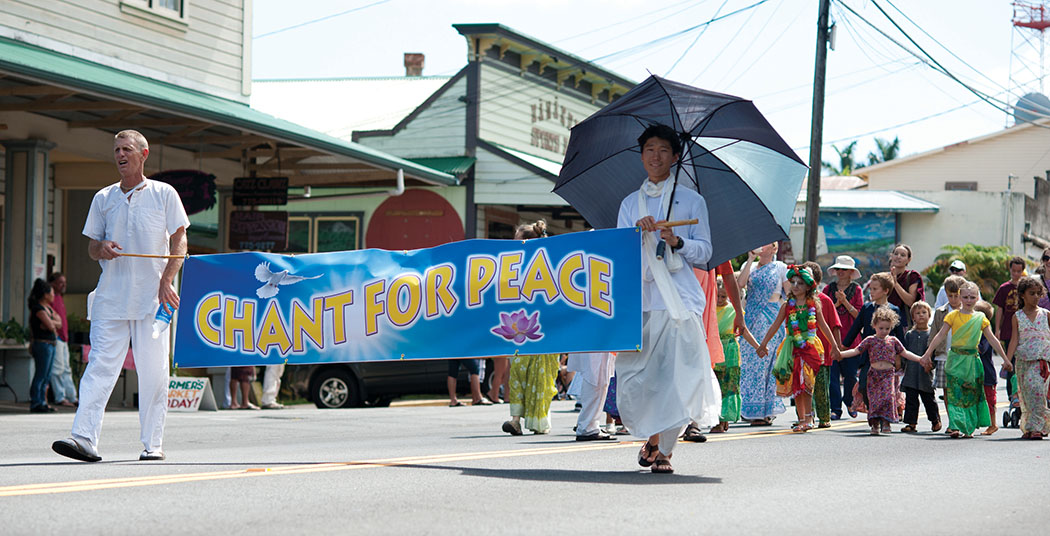
Sounds of Peace: A Joyful Noise in Honoka‘a
 By Catherine Tarleton
By Catherine Tarleton
What does peace sound like? In Honoka‘a, on Peace Day, September 21, it sounds like marching bands and taiko drums, ‘ukulele music, bon dance, bells, and gongs. It might sound like rock and roll with a mix of chant and laughter, or the buzz of robotic engines rolling down the street. It sounds like fun.
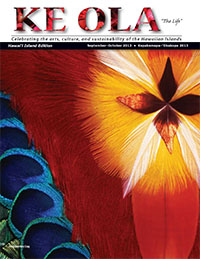
“The Peace Day Parade and Festival are all about fun,” said Peace Committee Chairman Miles Okumura, who began the annual event in Honoka‘a in 2007. “We’ve held to that, and tried to make it better and more entertaining every year. This is not just a procession down the street, waving at the crowd or carrying signs.”
With about 40 different acts, the parade transforms the usually quiet, former sugar cane town into a celebration of peace for a day, enjoyed by hundreds along the way. Stepping off from Honoka‘a High and Intermediate School (HHIS) at 4 pm, the parade proceeds down Mamane Street as a “moving stage” of music, dance, and circus performers. It concludes at the Honoka‘a Sports Complex for an open-air community festival, with food booths, a lineup of entertainment, keiki games, and more.
Locally, it brings the community together from schools, churches, clubs, and the arts. Globally, it’s part of the United Nations International Day of Peace, established in 1982 as a worldwide ceasefire and series of concerts, festivals, and educational events.
In the summer of 2006, a teen group, the Hawai‘i United Federation of the Junior Young Buddhists Associations, lobbied for the establishment of a Peace Day in the State of Hawai‘i. As a result, on April 19, 2007, then Governor Linda Lingle signed legislation declaring September 21 as Hawai‘i’s Peace Day, the first state in the nation to do so.

That inspired Miles Okumura of Honoka‘a Hongwanji Buddhist Temple to bring Peace Day to Hawai‘i Island. A teacher at HHIS who had worked in Chicago’s entertainment industry, Okumura wanted to create Peace Day events that were not necessarily political or religious. The goal was to share the many expressions of peace, compassion, and interdependence in ways that were, above all, entertaining.
“We have a circus act, magicians, marching bands, creative dance troupes, taiko drummers and robots. We will have school kids in costume, on decorated floats, or riding the Peace Train. Along with them, you will see the Senior Club singing group, Hare Krishna devotees, hula hālau, Filipino stick dancers, and rock bands. Our event is truly multi-cultural and inter-generational. Peace in action and peace in motion, it’s going to be a fun, fun night for the family!” Miles said.
Every piece of the Peace Day Parade and Festival has a story, as do the many people who join in the celebration year after year.
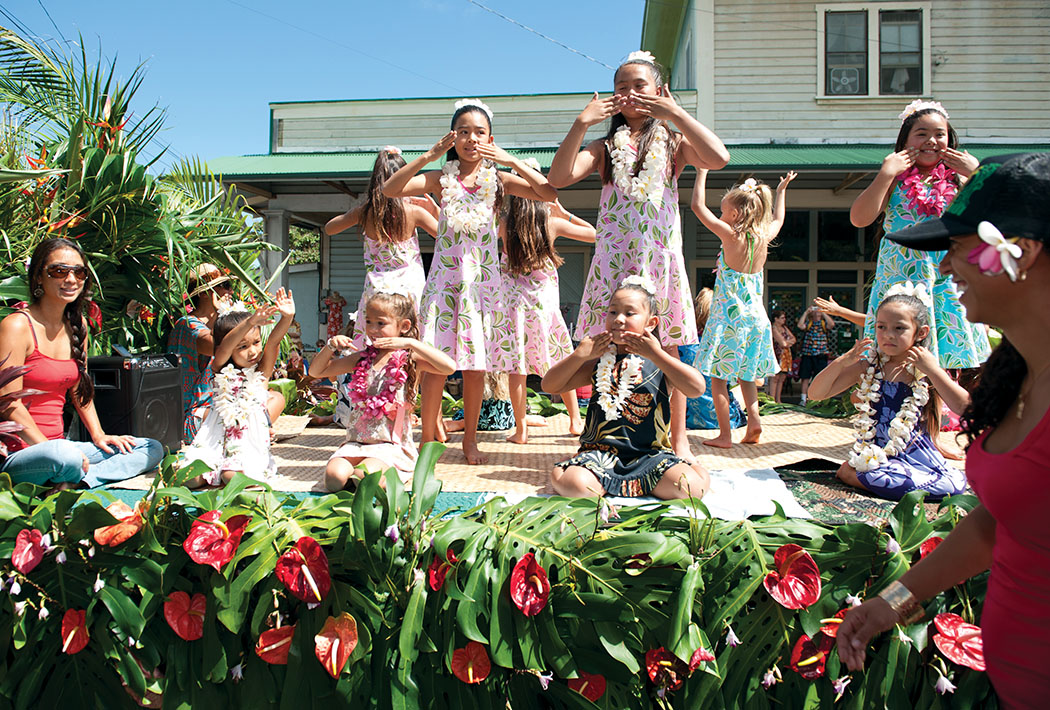
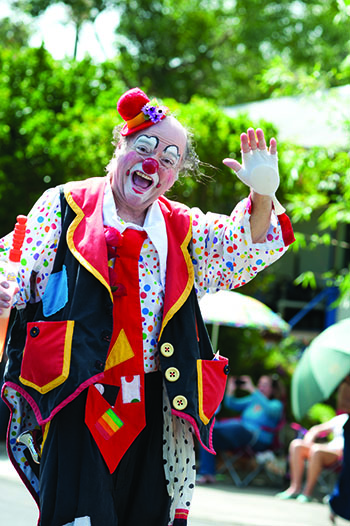
Adding elements of the big top to Peace Day, Graham Ellis and the “Hiccup Circus” take it to the streets with unicycles, tall stilt-walkers, acrobats, clowns, twirlers, and more. Teamed up with international twirlsport artist Annetta Lucero and Terminal Circus, the group brings tall and small performers of all ages to town, with bright costumes, great skills, and high energy.
“We wouldn’t want to miss Peace Day,” said Annetta. “The big, exciting news is that Graham has started the program again, and it’s going on all over the island.”
Annetta’s three children are part of Hiccup Circus: Jacob, 13, is a juggler, Calli, 11, is a contortionist and Lucas, 7, is a circus-style character who rides the rolling globe.
Based in Puna, Hiccup Circus is a successful education program for children and adults, directed by Ellis, a long time Hawai‘i resident and co-founder of the Seaview Performing Arts Center (SPACE). “Hiccups” perform in numerous island parades and festivals, and participate in self-esteem, sustainability, and drug and alcohol prevention productions across the state and beyond.
Terminal Circus, created by Annetta Lucero, provides high-level cirque-style entertainment for corporate functions and private parties, with a wide range of options on their performance menu.
In collaboration, the circuses were invited to do 10 shows at the Hawaii County Fair, some of which take place on Peace Day. With more than enough performers to cover both, Hawai‘i Island audiences will have plenty of opportunities to enjoy their talents. “It’s wonderful working with Graham, and we are so happy to be part of Hiccup Circus,” Annetta said.
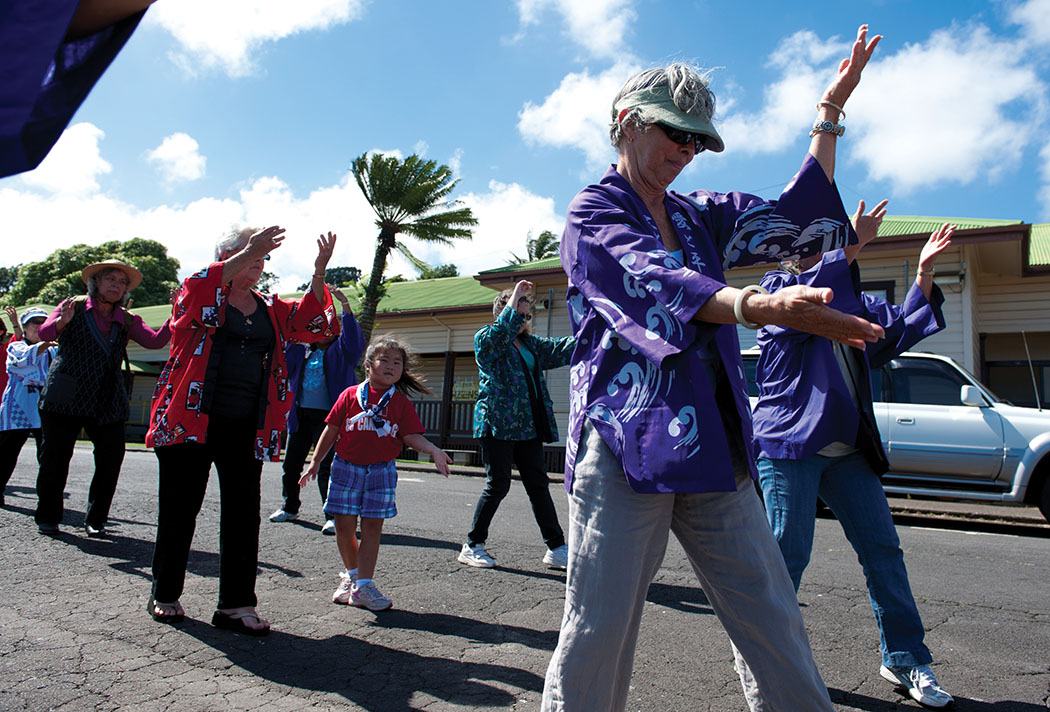
On a somewhat quieter and more traditional note, bon dance plays a big part on Peace Day every year, both dancing in the Parade and leading the mass-dance at the Festival afterward.
“I just really, really love it,” said Berni Ruiz of Honoka‘a, a bon dancer for the last nine years. Berni and a faithful group of seasoned dancers practice year-round to perfect the dances they know and learn new ones. The traditional Japanese folk dance is part of annual Obon celebrations that honor departed loved ones with temple services, dancing, special food, and family reunions. During Obon season, from mid-June to the end of August, Berni and the dancers are busy “touring” the temple festivals to support and share in the bon dance.
Women, men, and children of all ages enjoy bon dancing to the driving rhythm of taiko drums and favorite songs. Although there’s really no dress code, many wear the short, cotton “happi coat” in different colors to represent their home temple. In Hawai‘i, favorite dances tell stories of sugar cane workers that originated here in the 19th Century.
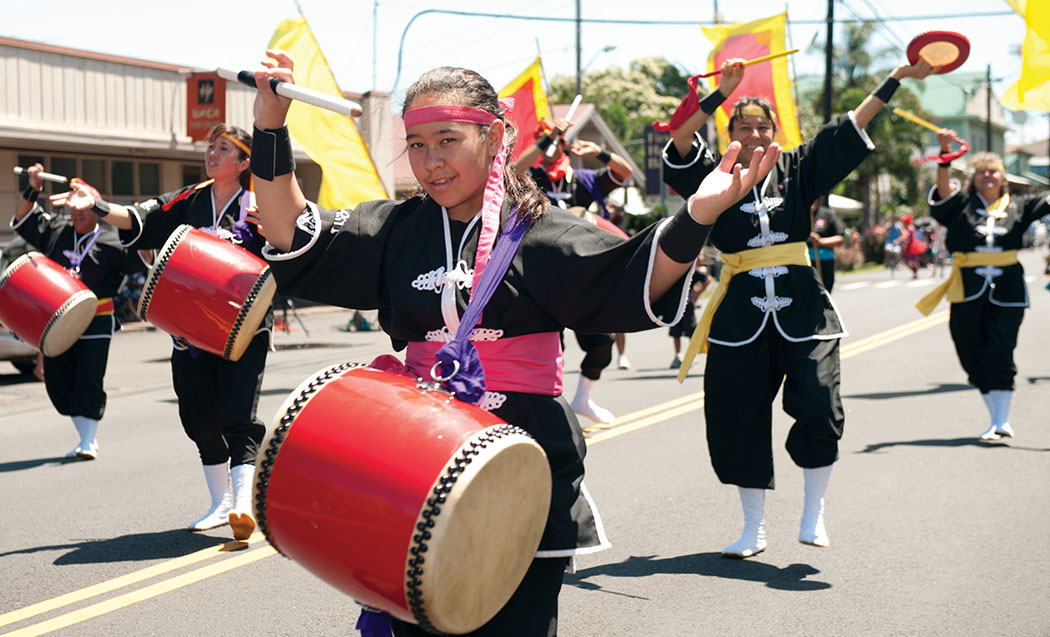
“In Honoka‘a, everybody goes to Obon and we all celebrate,” said Berni. “And the practice is good exercise. We do it all year round to keep our bodies going. It’s easier than Zumba! It’s also kind of a trance-like thing. So it feels like you are indeed dancing with spirits of loved ones who have passed, and asking them to join you—it makes it very special.”
At the Peace Festival everyone is invited to join in a mass community bon dance on the grass, led by the dancers and soon joined by hundreds—from kūpuna to even the smallest keiki—who follow along, happily clapping their hands to the beat of the drums.

A different style of taiko drumming is presented by Ryukyukoku Matsuri Daiko (RMD). Based in North Kohala and Waimea, RMD adds excitement to the Peace Day Parade, or any occasion, with their pounding rhythms and energetic dance moves. Hawai‘i Island Leader Kathy Matsuda has been playing drums for five years.
“Yes, it’s a lot of fun, and a lot of exercise,” said Kathy. “Ours is traditional Okinawan art of ‘Eisa. We have lots of dancing, lots of expressing the Okinawan spirit. Everything comes from the heart,” said Kathy. “We want to build bridges around the world and share the art of taiko.”
In a special sharing Augusts 3, Matsuda’s group joined RMD’s around the world, all playing at exactly the same time, 6 pm HST, during the international synchronized Eisa pageant, which coincided with the Hawi Jodo Bon Dance.
Unlike the large, stationery taiko form, RMD drums are hand-held, and range in size from about 12-17 inches, depending on the size of the drummers, who can start as young as five. Her group has about 25 members currently, of various ages and nationalities.
“There are no age requirements,” Kathy said. “Come try a class and see how you respond to it.”
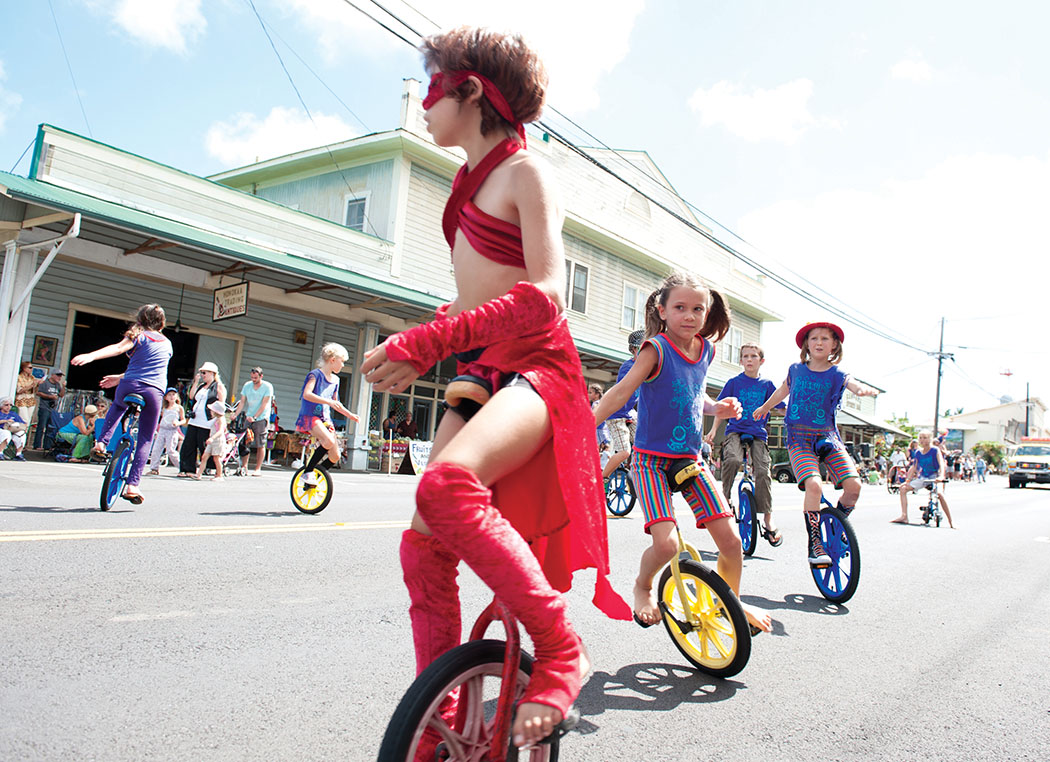
The group practices in Kohala Wednesdays and Thursdays, and in Waimea on Sundays and Mondays.
“We’ve been there pretty much since the beginning,” said Angel Prince of Prince Dance Company and Prince Dance Institute, featured Peace Day Parade artists.
Angel started dancing at age three in Connecticut, and attended Hofstra University in New York. She came to Hawai‘i in 2003 where she started teaching and choreographing, mostly in Waimea. She began Prince Dance Company in 2007, the same year as the first Peace Day Parade. She feels that dance is an important part of life.
“Everybody can learn how to dance. Everybody can dance. We were born to dance,” said Angel. “There’s a dance style for everyone. Find a style of music that speaks to you and there’s a dance style for it—contemporary, partner dancing, freestyle—and it’s good for your brain, body, and spirit.” Angel offers dance classes, workshops and programs for all levels.
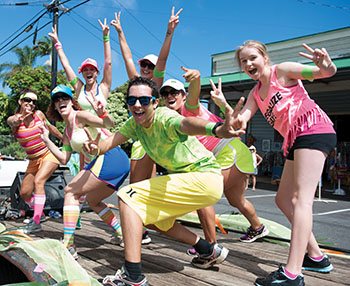
Dancing to all kinds of different drummers, making their own kind of music and joyful noises, many talented musicians, dancers, and other performers come together to celebrate the spirit of peace on Peace Day.
“Peace doesn’t have to be complicated, or serious, or restricted to religious or political settings,” said Miles, who received a Distinguished Peacemaker Award in 2010 at the University of Hawai‘i at Mānoa. “Peace can be entertaining, it can be artistic, musical, beautiful, and relaxing; it can be good exercise, and it can be a lot of fun.”
Honoka‘a is the place to be at 4 pm on Saturday, September 21, 2013 for the Seventh Annual Parade and Festival for the United Nations International Day of Peace.
The parade concludes at the Honoka‘a Sports Complex, where the outdoor Peace Festival begins at 5 pm, with ringing of the Peace Bell, a release of doves and a Hawaiian blessing. It continues until 8 pm, with a variety of local and ethnic food booths, crafters, live bands onstage, a silent auction to benefit the Peace Committee, and large community bon dance for everyone to join. Admission is free and all are welcome. ❖
Sadako Sasaki and Her Thousand Paper Cranes
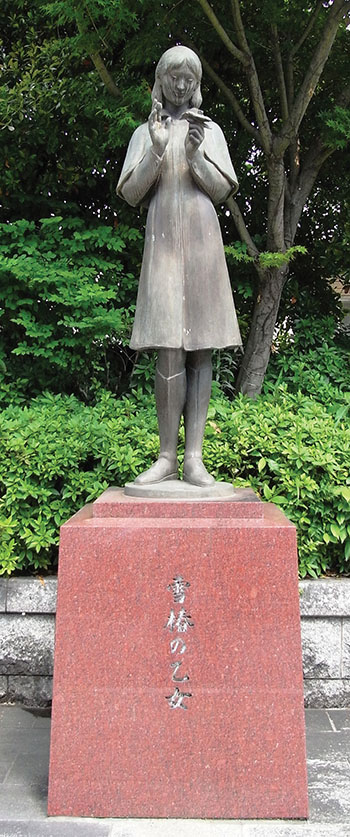
The Peace Committee is honored and very excited to welcome members of the Sasaki ‘ohana from Hiroshima to the Peace Day Parade and Festival on Saturday, September 21.
Their ancestor, Miss Sadako Sasaki, miraculously survived the atomic bomb at age two, then died of radiation-caused cancer ten years later.
In the last weeks of her life, Sadako and her friends folded origami cranes, trying to reach the magical 1,000 that would grant her one wish. Since 1955, Sadako and her paper cranes have become symbolic of peace and anti-nuclear war movements worldwide. Her statue stands in the Hiroshima Peace Memorial Park, surrounded by countless origami cranes.
The Peace Committee is “enfolding” the cranes into its thematic events this year in numerous ways. Observers may see church and school groups marching with colorful strands of 1,000 paper cranes, Mamane Street storefronts decorated with cranes, children’s Peace Posters and Parade tee shirts with crane imagery.
Ultimately, the Committee’s goal is to send 199,000 paper cranes (the number of people killed in the atomic blast) from Hawai‘i to the Children’s Peace Monument in Hiroshima, to honor Sadako Sasaki. Groups who create at least 1,000 may participate in the parade, and cranes will be accepted at the Peace Day Festival on September 21, where the Sasaki family may see the special tribute to Sadako.
For more information: Facebook.com/PeaceDayParade
How to fold a paper crane: en.wikipedia.org/wiki/Paper_crane
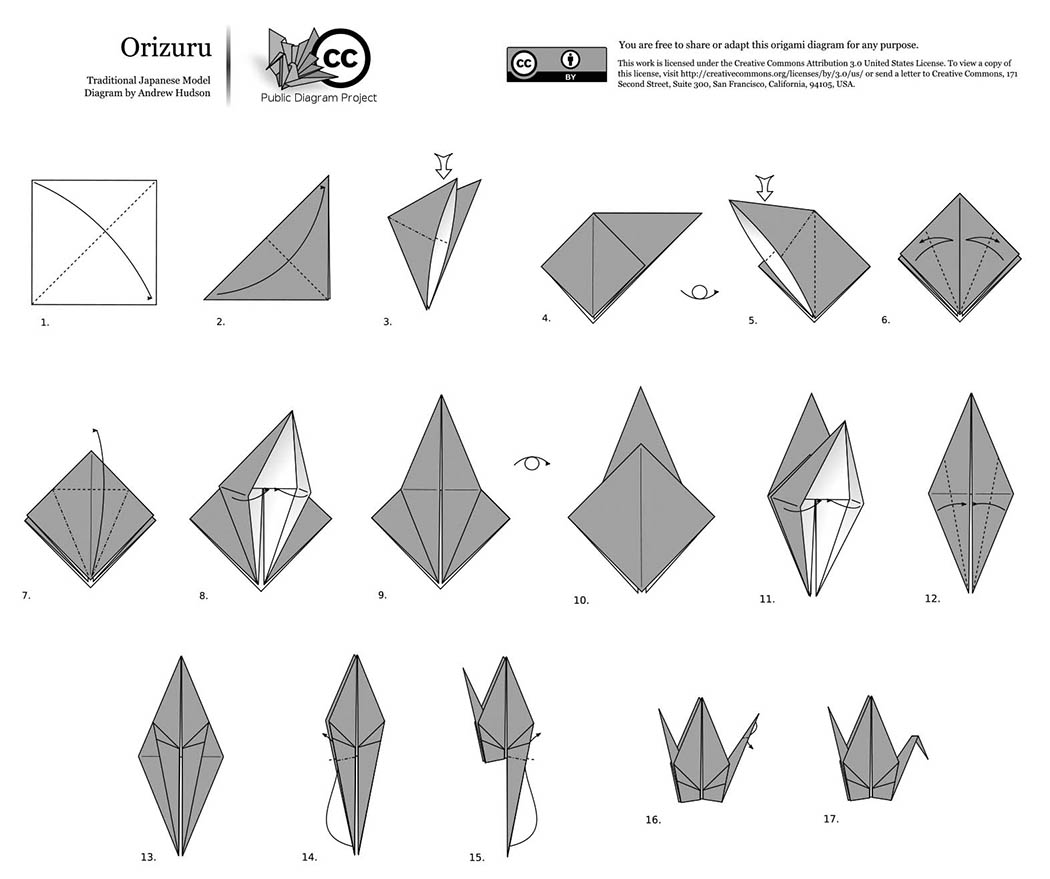
Honoka‘a Peace Parade: PeaceDayParade.org
Photos courtesy Sarah Anderson: SarahAndersonHawaii.com
Contact writer Catherine Tarleton: catherinetarleton@gmail.com
